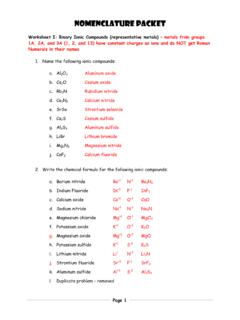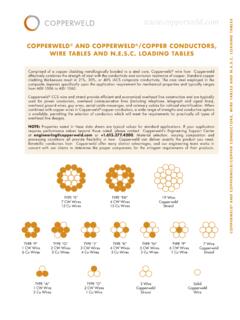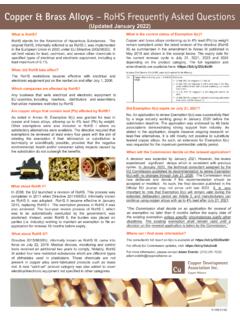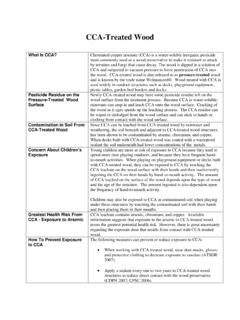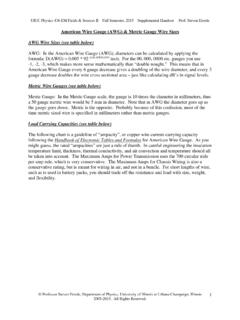Transcription of Understanding the Lead and Copper Rule
1 Understanding the Lead and Copper Rule EPA established the Lead and Copper Rule (LCR) in 1991 to protect public health and reduce exposure to lead in drinking water. The most common sources of lead in drinking water are lead pipes and brass or bronze faucets and fixtures. MAXIMUM CONTAMINANT LEVEL GOAL The Lead and Copper Rule established a Maximum Contaminant Level Goal (MCLG) of zero for lead. The MCLG is zero because there is no level of exposure to lead that is without risk. The Safe Drinking Water Act requires that EPA establish a treatment technique for contaminants like lead and Copper that prevents known or anticipated health effects to the extent feasible.
2 TREATMENT TECHNIQUE Lead is rarely found in significant quantities in naturally occurring sources of water, such as streams, lakes, rivers, or ground water. Lead from lead pipes, faucets, and fixtures can dissolve into water or sometimes can enter as flakes or small particles. To keep lead from entering the water, EPA requires some systems, including those that are having difficulty controlling lead, to treat water using certain chemicals that keep the lead in place by reducing corrosion. This treatment is called corrosion control. When corrosion control alone is not sufficient t o control lead exposure, EPA requires systems to educate the public about risks of lead in drinking water and to replace lead service lines.
3 Since implementation, the Lead and Copper Rule action level exceedances have decreased by over 90%EPA OGWDW | Understanding the Lead and Copper Rule EPA September 2020 EPA S LEAD ACTION LEVEL The lead action level is a measure of the effectiveness of the corrosion control treatment in water systems. The action level is not a standard for establishing a safe level of lead in a home. To check if corrosion control is working, EPA requires water systems to test for lead at the tap in certain homes, including those with lead service lines. Systems compare sample results from homes to EPA s action level of mg/L (15 ppb).
4 If 10 percent of the samples from these homes have water concentrations that are greater than the action level, then the system must perform actions such as public education and lead service line replacement. LCR VIOLATIONS Exceeding the action level is not a violation. Violations can be assessed if a system does not perform certain required actions ( , public education or lead service line replacement) after the action level is exceeded. Other violations may also be assessed under the rule. For example, if samples are collected improperly, samples are not reported, or if treatment is done incorrectly.
5 IMPLEMENTATION AND NEXT STEPS Implementation of the LCR over the past twenty-five years has resulted in major improvements in public health. The number of the nation s large drinking water systems that have exceeded the LCR action level has decreased by over 90 percent since the initial implementation of the rule. Based on June 2019 SDWIS data, about 97 percent of the systems have not reported an action level exceedance in the last 3 years. EPA is continuing to work with primacy agencies to ensure that the LCR is being properly implemented. EPA has recently released the proposed rule for public comment.
6 To learn more visit: For more information, visit.










